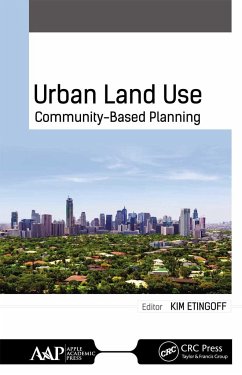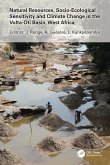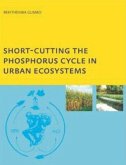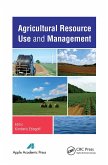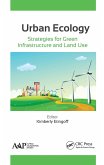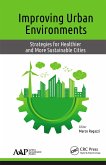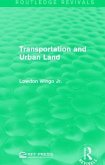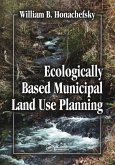Urban Land Use
Community-Based Planning
Herausgeber: Etingoff, Kimberly
Urban Land Use
Community-Based Planning
Herausgeber: Etingoff, Kimberly
- Broschiertes Buch
- Merkliste
- Auf die Merkliste
- Bewerten Bewerten
- Teilen
- Produkt teilen
- Produkterinnerung
- Produkterinnerung
This compendium volume, Urban Land Use: Community-Based Planning, covers a range of land use planning and community engagement issues.
Andere Kunden interessierten sich auch für
![Natural Resources, Socio-Ecological Sensitivity and Climate Change in the Volta-Oti Basin, West Africa Natural Resources, Socio-Ecological Sensitivity and Climate Change in the Volta-Oti Basin, West Africa]() Natural Resources, Socio-Ecological Sensitivity and Climate Change in the Volta-Oti Basin, West Africa149,99 €
Natural Resources, Socio-Ecological Sensitivity and Climate Change in the Volta-Oti Basin, West Africa149,99 €![Short-Cutting the Phosphorus Cycle in Urban Ecosystems Short-Cutting the Phosphorus Cycle in Urban Ecosystems]() Bekithemba GumboShort-Cutting the Phosphorus Cycle in Urban Ecosystems120,99 €
Bekithemba GumboShort-Cutting the Phosphorus Cycle in Urban Ecosystems120,99 €![Agricultural Resource Use and Management Agricultural Resource Use and Management]() Agricultural Resource Use and Management100,99 €
Agricultural Resource Use and Management100,99 €![Urban Ecology Urban Ecology]() Urban Ecology99,99 €
Urban Ecology99,99 €![Improving Urban Environments Improving Urban Environments]() Improving Urban Environments100,99 €
Improving Urban Environments100,99 €![Transportation and Urban Land Transportation and Urban Land]() Lowdon WingoTransportation and Urban Land43,99 €
Lowdon WingoTransportation and Urban Land43,99 €![Ecologically Based Municipal Land Use Planning Ecologically Based Municipal Land Use Planning]() William B HonachefskyEcologically Based Municipal Land Use Planning60,99 €
William B HonachefskyEcologically Based Municipal Land Use Planning60,99 €-
-
-
This compendium volume, Urban Land Use: Community-Based Planning, covers a range of land use planning and community engagement issues.
Hinweis: Dieser Artikel kann nur an eine deutsche Lieferadresse ausgeliefert werden.
Hinweis: Dieser Artikel kann nur an eine deutsche Lieferadresse ausgeliefert werden.
Produktdetails
- Produktdetails
- Verlag: Apple Academic Press
- Seitenzahl: 328
- Erscheinungstermin: 31. März 2021
- Englisch
- Abmessung: 229mm x 152mm x 18mm
- Gewicht: 440g
- ISBN-13: 9781774636893
- ISBN-10: 1774636891
- Artikelnr.: 69928414
- Herstellerkennzeichnung
- Libri GmbH
- Europaallee 1
- 36244 Bad Hersfeld
- gpsr@libri.de
- Verlag: Apple Academic Press
- Seitenzahl: 328
- Erscheinungstermin: 31. März 2021
- Englisch
- Abmessung: 229mm x 152mm x 18mm
- Gewicht: 440g
- ISBN-13: 9781774636893
- ISBN-10: 1774636891
- Artikelnr.: 69928414
- Herstellerkennzeichnung
- Libri GmbH
- Europaallee 1
- 36244 Bad Hersfeld
- gpsr@libri.de
Kim Etingoff has a Tufts University's terminal master's degree in Urban and Environmental Policy and Planning. Her recent experience includes researching with Initiative for a Competitive Inner City a report on food resiliency within the city of Boston. She worked in partnership with Dudley Street Neighborhood Initiative and Alternatives for Community and Environment to support a community food-planning process based in a Boston neighborhood, which was oriented toward creating a vehicle for community action around urban food issues, providing extensive background research to ground the resident-led planning process. She has worked in the Boston Mayor's Office of New Urban Mechanics, and has also coordinated and developed programs in urban agriculture and nutrition education. In addition, she has many years of experience researching, writing, and editing educational and academic books on environmental and food issues.
The Collapse of Place: Derelict Land, Deprivation, and Health Inequality in
Glasgow, Scotland. Co-benefits of Designing Communities for Active Living:
An Exploration of Literature. Why We Need Urban Health Equity Indicators:
Integrating Science, Policy, and Community. Owning the City: New Media and
Citizen Engagement in Urban Design. Urban Ecological Stewardship:
Understanding the Structure, Function and Network of Community-based Urban
Land Management. Planning Office and Community Influence on Land-Use
Decisions Intended to Benefit the Low-Income: Welcome to Chicago. A
Structured Decision Approach for Integrating and Analyzing Community
Perspectives in Re-Use Planning of Vacant Properties in Cleveland, Ohio.
Development of Future Land Cover Change Scenarios in the Metropolitan
Fringe, Oregon, U.S., with Stakeholder Involvement. The Use of Visual
Decision Support Tools in an Interactive Stakeholder Analysis-Old Ports as
New Magnets for Creative Urban Development. Between Boundaries: From
Commoning and Guerrilla Gardening to Community Land Trust Development in
Liverpool. The Sustainable and Healthy Communities Research Program: The
Environmental Protection Agency's Research Approach to Assisting Community
Decision-Making.
Glasgow, Scotland. Co-benefits of Designing Communities for Active Living:
An Exploration of Literature. Why We Need Urban Health Equity Indicators:
Integrating Science, Policy, and Community. Owning the City: New Media and
Citizen Engagement in Urban Design. Urban Ecological Stewardship:
Understanding the Structure, Function and Network of Community-based Urban
Land Management. Planning Office and Community Influence on Land-Use
Decisions Intended to Benefit the Low-Income: Welcome to Chicago. A
Structured Decision Approach for Integrating and Analyzing Community
Perspectives in Re-Use Planning of Vacant Properties in Cleveland, Ohio.
Development of Future Land Cover Change Scenarios in the Metropolitan
Fringe, Oregon, U.S., with Stakeholder Involvement. The Use of Visual
Decision Support Tools in an Interactive Stakeholder Analysis-Old Ports as
New Magnets for Creative Urban Development. Between Boundaries: From
Commoning and Guerrilla Gardening to Community Land Trust Development in
Liverpool. The Sustainable and Healthy Communities Research Program: The
Environmental Protection Agency's Research Approach to Assisting Community
Decision-Making.
The Collapse of Place: Derelict Land, Deprivation, and Health Inequality in
Glasgow, Scotland. Co-benefits of Designing Communities for Active Living:
An Exploration of Literature. Why We Need Urban Health Equity Indicators:
Integrating Science, Policy, and Community. Owning the City: New Media and
Citizen Engagement in Urban Design. Urban Ecological Stewardship:
Understanding the Structure, Function and Network of Community-based Urban
Land Management. Planning Office and Community Influence on Land-Use
Decisions Intended to Benefit the Low-Income: Welcome to Chicago. A
Structured Decision Approach for Integrating and Analyzing Community
Perspectives in Re-Use Planning of Vacant Properties in Cleveland, Ohio.
Development of Future Land Cover Change Scenarios in the Metropolitan
Fringe, Oregon, U.S., with Stakeholder Involvement. The Use of Visual
Decision Support Tools in an Interactive Stakeholder Analysis-Old Ports as
New Magnets for Creative Urban Development. Between Boundaries: From
Commoning and Guerrilla Gardening to Community Land Trust Development in
Liverpool. The Sustainable and Healthy Communities Research Program: The
Environmental Protection Agency's Research Approach to Assisting Community
Decision-Making.
Glasgow, Scotland. Co-benefits of Designing Communities for Active Living:
An Exploration of Literature. Why We Need Urban Health Equity Indicators:
Integrating Science, Policy, and Community. Owning the City: New Media and
Citizen Engagement in Urban Design. Urban Ecological Stewardship:
Understanding the Structure, Function and Network of Community-based Urban
Land Management. Planning Office and Community Influence on Land-Use
Decisions Intended to Benefit the Low-Income: Welcome to Chicago. A
Structured Decision Approach for Integrating and Analyzing Community
Perspectives in Re-Use Planning of Vacant Properties in Cleveland, Ohio.
Development of Future Land Cover Change Scenarios in the Metropolitan
Fringe, Oregon, U.S., with Stakeholder Involvement. The Use of Visual
Decision Support Tools in an Interactive Stakeholder Analysis-Old Ports as
New Magnets for Creative Urban Development. Between Boundaries: From
Commoning and Guerrilla Gardening to Community Land Trust Development in
Liverpool. The Sustainable and Healthy Communities Research Program: The
Environmental Protection Agency's Research Approach to Assisting Community
Decision-Making.

